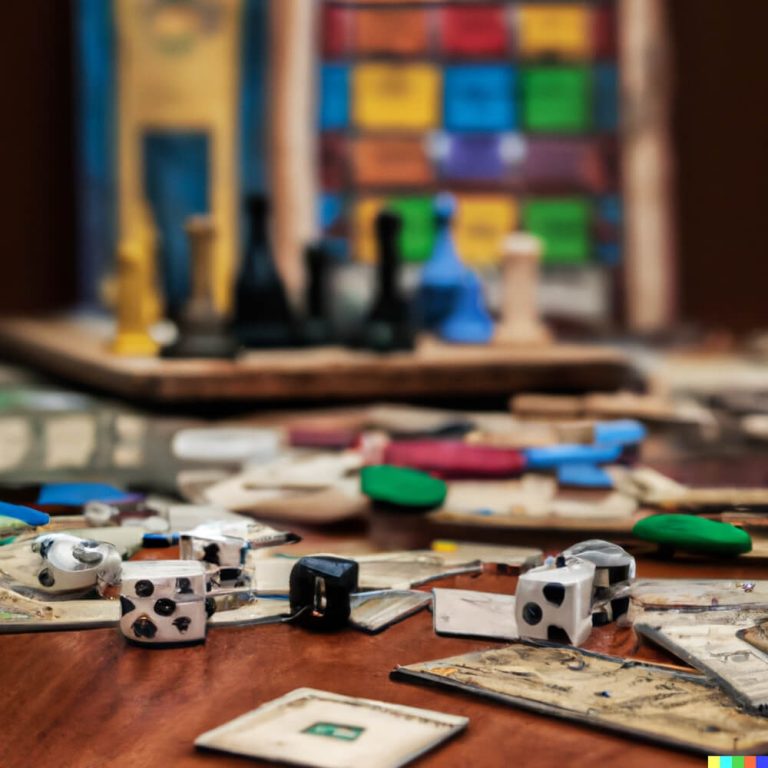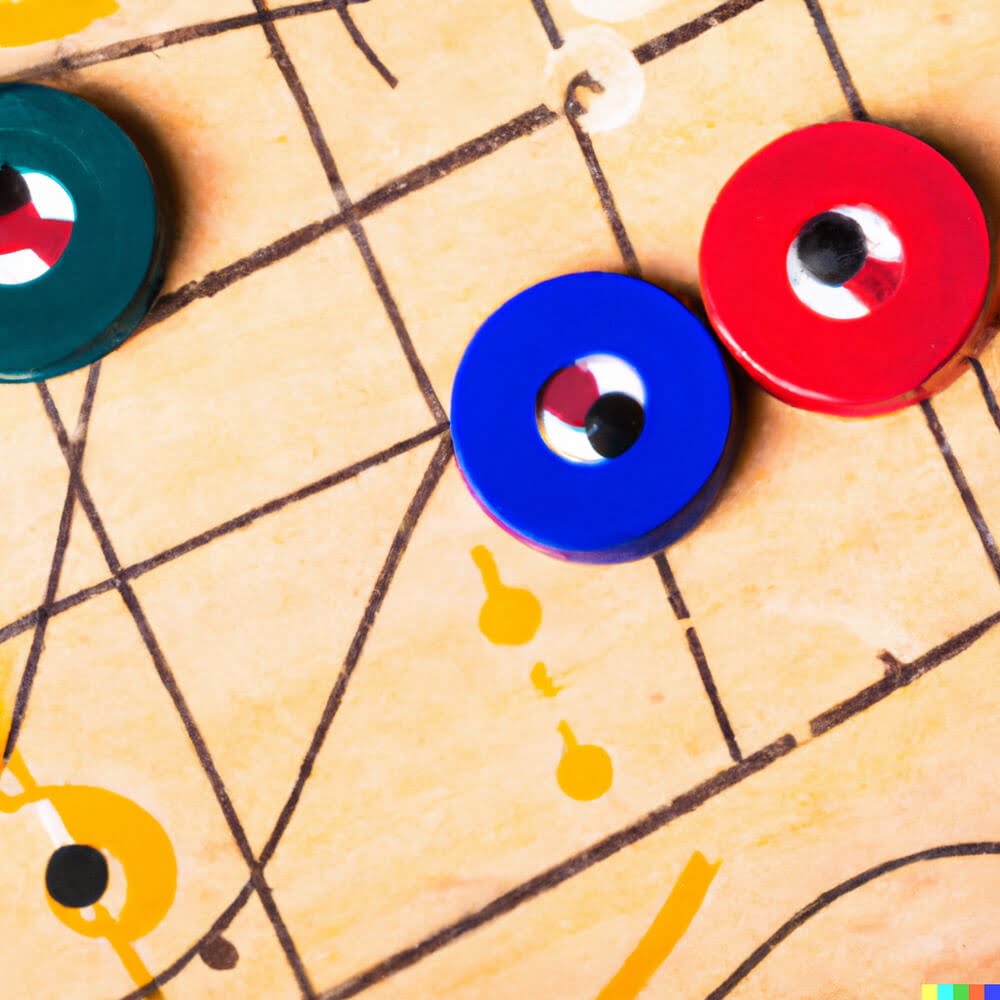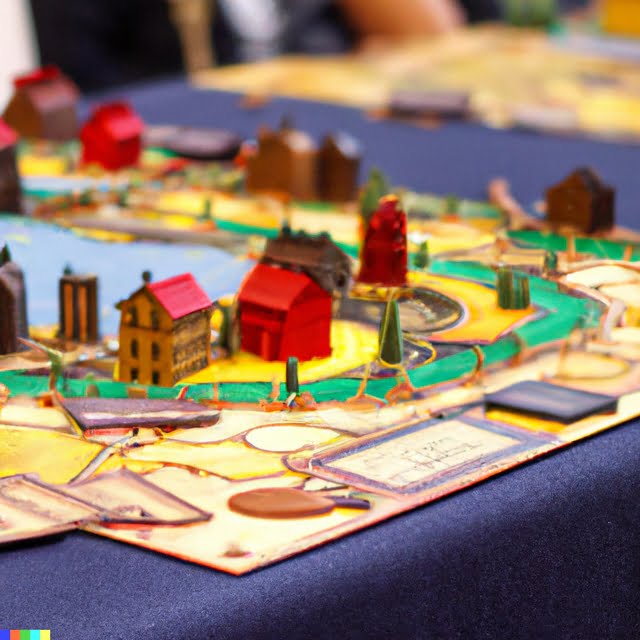Introduction to the Rules of Go Board Game
Go (or go-chess) is an ancient game that first began in China thousands of years ago. It has since spread around the world, and can now be found in many countries, including Japan, South Korea, and parts of Southeast Asia. The main goal of Go is to encircle your opponent’s stones with your own stones. Depending on the type of game you’re playing, either a certain area or even your entire side must become surrounded to win the game. Players place their stones on the intersections (ox or star points) of the line segments on a go board. Stones may be captured when they are completely surrounded by other stones with no liberties left for them to move to. In some variations, capturing most points on the board can also result in a win for one player.
Additionally, there are different levels of play depending on how advanced you want to get ” from beginner level up to professional tournament level. This vast scope allows people from all over the world and from many backgrounds to compete and have fun while doing so. As such, Go has been described as a “mind-sport” ” a way of testing mental skills without relying on physical fitness or strength. As well as its obvious entertainment value and skill development qualities, this makes it a great pastime for anyone regardless of background or ability – suitable for young players eager to learn strategy games as well as more experienced players looking for a challenge!
Overview of the Equipment and Setup
Go is a two-player board game played on rectangular boards consisting of an array of 19×19 lines or smaller 13×13 lines. The board and stones are usually made from wood or plastic. Each player has an equal number of stones, usually either white or black, to place onto the playing surface during their turn.
Black starts first and gameplay alternates between each player until both players have passed consecutively. To win the game, a player should strive to have the most territory by occupying spaces with their stones and capturing the opponent’s pieces by surrounding them with more stones than they have. Adjacent intersections can be connected by making lines of stones; Players cannot pass over their own stone or that of their opponent’s yet can jump over them when trying to make connecting lines. Stones can form complex shapes, but attached strings must remain connected to avoid being captured. Captured pieces are removed from the board when it becomes clear that one player has surrounded more than multiples of two in return for one piece (except on points). The game ends when both players agree or upon passing consecutively. After the game is over, “dead” groups are removed before calculating final scores so point calculation without dead groups always yields accurate results. The winner is determined by having more open spaces surrounded with their colour than that of their opponent’s in addition to any captured points they may have acquired during playtime.
Rules of the Game
Capturing: capturing opponent’s stones is a key part of Go. Stones can be captured by surrounding them with your own stones, trapping them and eliminating their liberties (empty board points next to the stone). If there are no empty spaces around the trapped stones, they are removed from the board.
Ko: Ko is a type of capturing that needs special explanation. It arises when you capture an opponent’s group and make it so that your opponent can immediately recreate that group in its exact same position as before. This goes against the rules of go ” players are not supposed to take back what was already taken. To prevent this situation teams must use ko threats which allow them to threaten a position instead of actually occupying. That way if their opponent occupies it they can follow up and take it without breaking any rules.
Scorekeeping: At the end of a game of Go multiple calculations must be done in order to come up with one final score deciding who has won or lost. In order to calculate these scores points are marked in all bowls were two opposing player’s stones were not next to each other on either side. After this players decide how much territory each side has acquired by counting all empty points surrounded by only one color’s stones and add together with any prisoners (captured opponents stones) they may have had during game play. The final number determined determines who won or lost the game according to established rules for the game governing ties, double kos etc…
Handicaps: In novice games handicaps may be given in order for weaker players give themselves more opportunities to win a game or at least offer stiffer competition for more experienced players giving them handicaps generally take form adding stone on strategic points near each corner for weaker players giving them an advantage although experienced player often ignore them opting instead to fight over key positional areas instead relying on their experience to carry out victory despite handi caps being offered
Tactical Tips
Opening Strategies: An important part of the game of Go is choosing how to begin the game. A great opening strategy will determine how successful your game will be and will influence your position on the board for the remainder of the match. Generally, a good opening strategy will include taking quick territories and establishing an early lead in terms of both territory points and positional strength. One way you can achieve this is by constructing a moyo, or large sphere of influence that encompasses many different points on the board; this allows you to control areas while working towards increasing your own score.
Creating Deltas: As you progress through the game, it might become necessary to shift your pieces and expand outwards in order to gain further ground. Constructing deltas is a way to accomplish this, as they provide stronger defence compared to single pieces or a small area with just two stones connected together. By making deltas, you are able to secure regions in the shape of a triangle; placing combinations of stones here will make it more difficult for your opponent to invade those areas due to decreased mobility from being unable to move around them easily.
Building Walls & Frameworks: Knowing how to construct walls and frameworks is essential in Go since these structures offer greater protection than normal configurations of stones scattered across parts of the board. A wall creates a strong barrier that keeps groups separate from one another as well as allowing you greater control over specific regions; efficient frameworks may also be constructed so as to maximise defence against invading threats all over portions of the board. Skillful placement and manipulation of such walls and frameworks can greatly reduce vulnerability when attempting more ambitious plays since they remain untouched by opposing attempts at invasion or capture, ensuring good shape on any side while limiting enemy presence on other sides.
Etiquette
When playing Go, there are certain etiquette rules that should be observed to maintain respect and ensure a pleasant game. In formal games, there is often an agreement as to how boards and pieces will be handled, as well as the specific form of salute prior to the start of any game. According to traditional Japanese etiquette, players should bow at the beginning and end of each game. Boards and pieces should remain untouched during a player’s turn, i.e., do not adjust the stones while considering a move. Similarly, if a stone has been taken back after it has already been played onto the board, it is necessary to apologize for doing so. Players should also keep their voices low when deciding on moves in order to not influence or distract their opponent from making decisions. Furthermore, a player should never gloat over defeating their opponent or criticizing them for making bad moves; good sportsmanship is essential. Finally, once both players have finished counting points and scores have been agreed upon (usually with verifiers present) then both players bow simultaneously and declare “jigo”.
Advanced Tactics
Endgame: Endgame is the stage of a go board game when there are few pieces left on the board and most of the large moyos (areas of influence) have been created. Endgame means players must come up with creative ways to gain edge, territory and points.
Sente: Sente is when a player takes initiative in a way that forces his or her opponent to respond. This typically involves playing moves that generate some kind of profit for your position, such as making an eye, increasing territory, or threatening to capture one of your opponent’s stones or groups. Doing this will also put your opponent on the defensive as they try to respond to your sente move.
Killing Moves: Killing moves are highly effective tactics used in go board games. A killing move is when a player launches an attack against their opponent’s stone or group in order to try and cut it off from the rest of its support so that it can no longer be defended or make eyes and therefore cannot survive on its own with any dignity. These moves can be very decisive and should be used judiciously as they require considerable skill and prediction to make successful.
Conclusion and Resources
Go is an ancient board game that originated in Asia. It is a two-player game where the goal is to capture more territory than your opponent by placing black and white stones on the intersections of the 19×19 grid. The rules are simple, yet mastering Go strategy and reading can take years to master. To begin playing Go, one must be familiar and understand how pieces (stones) move between empty spaces (intersections) on the board, how they capture stones, form eyes and obtain points, as well as how territory affects the outcome of the game. Additionally, it is important to know how komi and handicaps work as well as some basic etiquette before starting a game.
Overall understanding Go requires a bit of practice and study but once you have grasped these basics you will be able to enjoy this wonderful board game for years to come!
Conclusions
At its core, Go has very simple rules, making it easy for anyone to learn and play. By understanding how pieces move between intersections on the board, capturing other pieces, creating eyes, calculating territory points and also knowing about komi and handicaps playing a complete game becomes possible.
Resources
The American Go Association: https://www.usgo.org/
Sensei’s Library: https://senseis.xmp.net/?GoRules
Go Game Guru: http://gogameguru.com/learning-go/
Bretzelik Rules of Go: http://bretzelik-rules-of-go.weebly

I love playing all kinds of games – from classics like Monopoly to modern favourites like Ticket to Ride.
I created this blog as a way to share my love of board games with others, and provide information on the latest releases and news in the industry.





